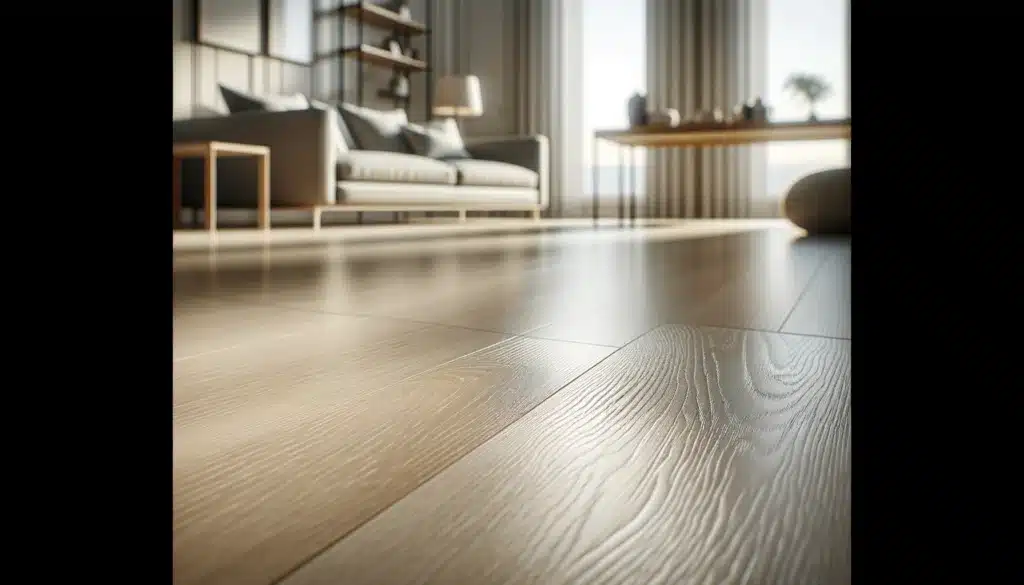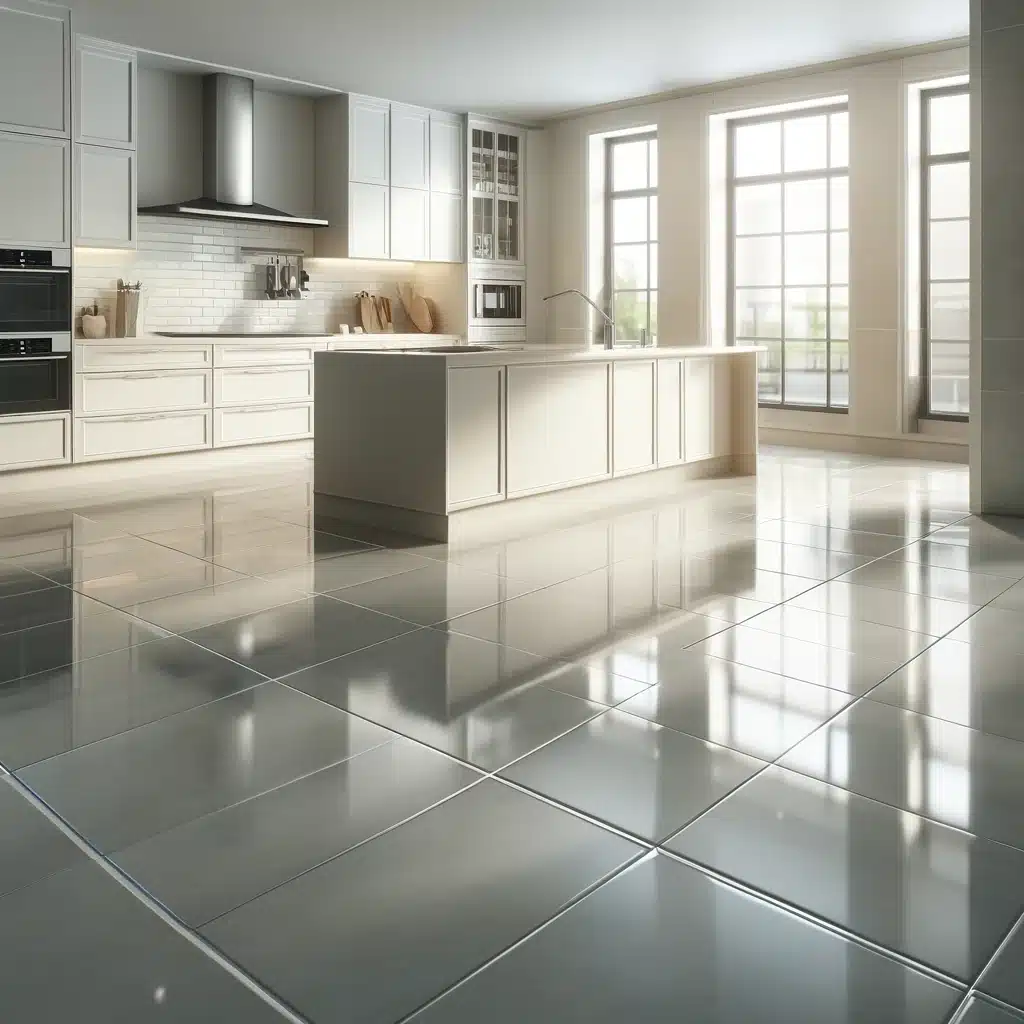How to Clean Laminate Floor 7 Simple Steps for a Shiny Finish
Keeping your laminate floors looking pristine and shiny doesn’t have to be a chore. With these simple steps, you’ll learn how to clean laminate floors effectively, ensuring they stay spotless and gleaming. 1. Gather Your Supplies Before you start cleaning your laminate floor, it’s essential to gather all the necessary supplies. Having the right tools on hand will make the process more efficient and ensure the best results. First, get a microfiber mop. This type of mop is gentle on the surface and highly effective at picking up dirt and dust without causing any scratches. Additionally, you’ll need a soft-bristle broom or a vacuum cleaner equipped with a soft brush attachment. These tools are crucial for removing loose debris and preventing any potential damage to the laminate floor’s surface. Next, you’ll need to prepare a cleaning solution. A spray bottle will be handy for this. For the solution, you have a couple of options. You can make a homemade mixture using white vinegar, which is excellent for breaking down grime and doesn’t leave behind any residue. Alternatively, you can opt for a commercial laminate floor cleaner that is specifically designed for this type of flooring. Both options are effective, but be sure to avoid harsh chemicals or soap-based products, as they can harm the laminate finish. Finally, gather some soft, dry cloths. These will be essential for drying and polishing the floor after mopping. Using a soft, dry cloth ensures that no water spots or streaks are left behind, giving your laminate floor a shiny, polished finish. With all these supplies ready, you’ll be well-prepared to tackle the task of cleaning your laminate floor, ensuring it remains spotless and gleaming. 2. Sweep or Vacuum When starting the cleaning process for your laminate floor, begin by removing loose dirt, dust, and debris from the surface. This initial step is vital because it prevents scratches and keeps your laminate floor looking smooth and pristine. Use a soft-bristle broom to gently sweep the floor, ensuring that all dust and small particles are collected. If you prefer, a vacuum cleaner with a brush attachment can also be very effective. The brush attachment is gentle enough to avoid any damage while thoroughly picking up dirt and debris. Ensuring that your laminate floor is free from loose dirt and dust before you mop is crucial for maintaining its appearance and longevity. Tiny particles of dirt can act like sandpaper, causing scratches and dulling the surface over time. By regularly sweeping or vacuuming, you can prevent this type of damage and keep your laminate floor looking as good as new. Additionally, this step makes the subsequent cleaning stages more effective, as there will be fewer particles to interfere with the cleaning solution and mop. Taking the time to properly sweep or vacuum your laminate floor not only helps in maintaining its aesthetic appeal but also extends its lifespan. Regular removal of dirt and debris ensures that your floor remains smooth and free from unsightly marks. 3. Prepare the Cleaning Solution Preparing the cleaning solution for your laminate floor, start by mixing one part white vinegar with three parts warm water in a spray bottle. This homemade solution is highly effective for cleaning laminate floors as it breaks down grime without leaving behind any residue. The mild acidity of the vinegar helps to dissolve dirt and makes the floor shine, while the warm water enhances its cleaning power. If you prefer not to use a homemade mixture, you can opt for a commercial laminate floor cleaner. These cleaners are specifically formulated for laminate surfaces, ensuring they clean effectively without causing any damage. However, it’s important to read the labels and choose a product that is free from harsh chemicals. Many commercial cleaners are designed to be gentle yet effective, preserving the integrity and appearance of your laminate floor. Avoid using soap-based products or other harsh chemicals when cleaning your laminate floor. Such products can leave a sticky residue that dulls the finish and can even cause long-term damage to the surface. By sticking to a mixture of white vinegar and warm water or a recommended laminate floor cleaner, you ensure that your floor remains clean, shiny, and in excellent condition for years to come. 4. Mop the Floor To effectively mop your laminate floor, start by spraying the cleaning solution onto the floor in small, manageable sections. This targeted approach ensures that you can clean each area thoroughly without the solution drying too quickly. Once you’ve sprayed a section, use a microfiber mop to gently clean the area. Microfiber mops are ideal for laminate floors as they are soft and won’t scratch the surface. Additionally, they do an excellent job of picking up dirt and grime. As you mop, be sure to follow the grain of the laminate. This technique helps to remove dirt more effectively and prevents streaking, leaving your floor looking uniformly clean. One crucial point to remember is to wring out the mop thoroughly before using it on the floor. Excess water can be harmful to laminate flooring as it can seep into the seams and cause swelling or other damage. By keeping the mop slightly damp rather than soaking wet, you protect the floor from potential water damage while still achieving a deep clean. Consistently mopping your laminate floor with the right technique not only keeps it spotless but also enhances its longevity. By spraying the cleaning solution in small sections and using a microfiber mop, you ensure a gentle yet effective cleaning process. This method keeps your laminate floor in top condition, maintaining its shine and durability. 5. Dry the Floor After you’ve finished mopping your laminate floor, it’s crucial to immediately dry the surface with a soft, dry cloth. This step is essential to prevent water spots and streaks, which can dull the floor’s appearance. Using a dry cloth allows you to quickly absorb any remaining moisture, ensuring that the laminate floor maintains a shiny, polished finish.
How to Clean Laminate Floor 7 Simple Steps for a Shiny Finish Read More »

